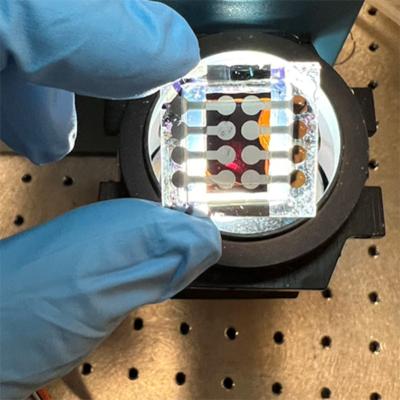An international team of researchers, including ones from the University of Toronto, University of Toledo, Northwestern University, Lawrence Berkeley National Laboratory, KAUST and more, recently developed an all-perovskite tandem device that is said to show reduced recombination losses in the cell’s bottom device and excellent stability.
Image credit: Northwestern University
To improve the perovskite solar cell’s surface, the scientists created partially non-conductive and non-functional areas that protect the perovskite area underneath from becoming defective. The team examined the addition of diamine to improve the perovskite solar cell’s surface. The scientists found that the process made the surface more stable and improved the overall performance, resulting in a power conversion efficiency of 27.4% with better stability.
The new strategy was found helpful in stabilizing and perfecting mixed tin-lead perovskite surfaces for efficient and stable all-perovskite tandem solar cells.
The team's recent work used diamine chelation chemistry targeting tin-containing perovskite, where a metal ion forms a stable bond with a molecule that has two nitrogen atoms holding the metal in place.
Instead of trying to eliminate or reduce perovskite surface defects, the researchers created partially non-conductive and non-functional areas that protect the perovskite area underneath from becoming defective.
In their work, the team used a new chemical method to improve the perovskite solar cell’s surface. By adding diamine to the surface, they removed extra tin and adjusted the tin-to-lead ratio to be more balanced. The diamine also created a stable barrier layer that helps protect the surface from atmospheric oxygen and heat. This process made the surface more stable and improved the overall performance, resulting in a power conversion efficiency of 27.4 percent with better stability.
“Our diamine chelation strategy effectively suppresses the oxidation and prolongs operational stability. This is because diamine chelation forms high-resistive barriers, similar to the passivated emitter rear contact structure used in silicon solar cells,” Northwestern University's research associate professor Bin Chen said. “These high-resistive barriers provide a novel and effective passivation mechanism for stabilizing and perfecting mixed tin-lead and all-perovskite tandem solar cells, moving this technology closer to commercialization.”




